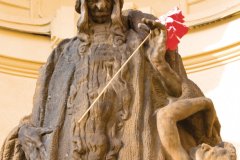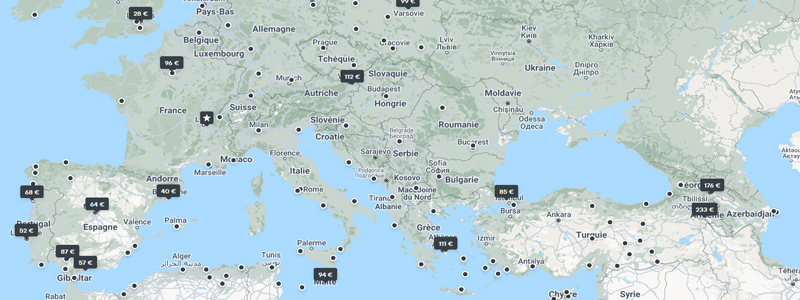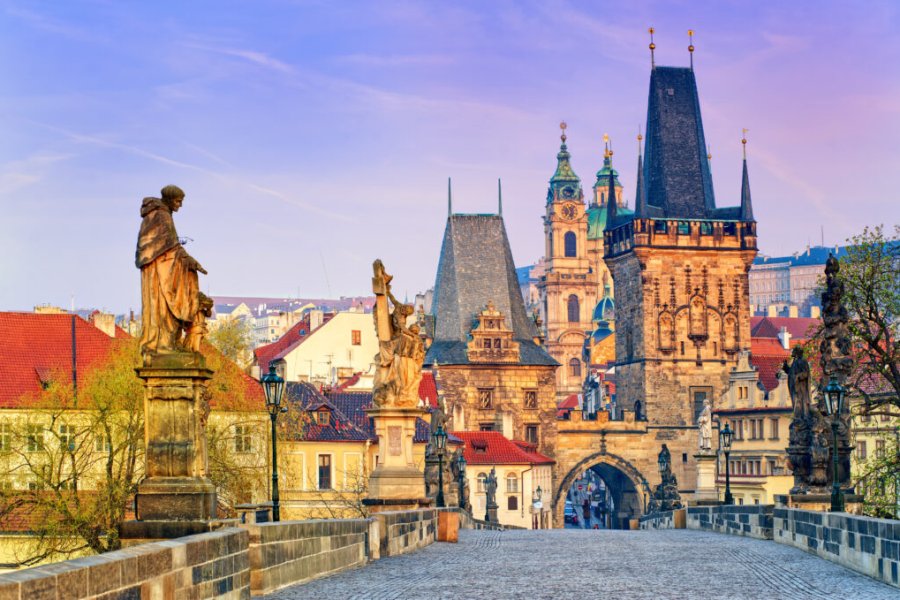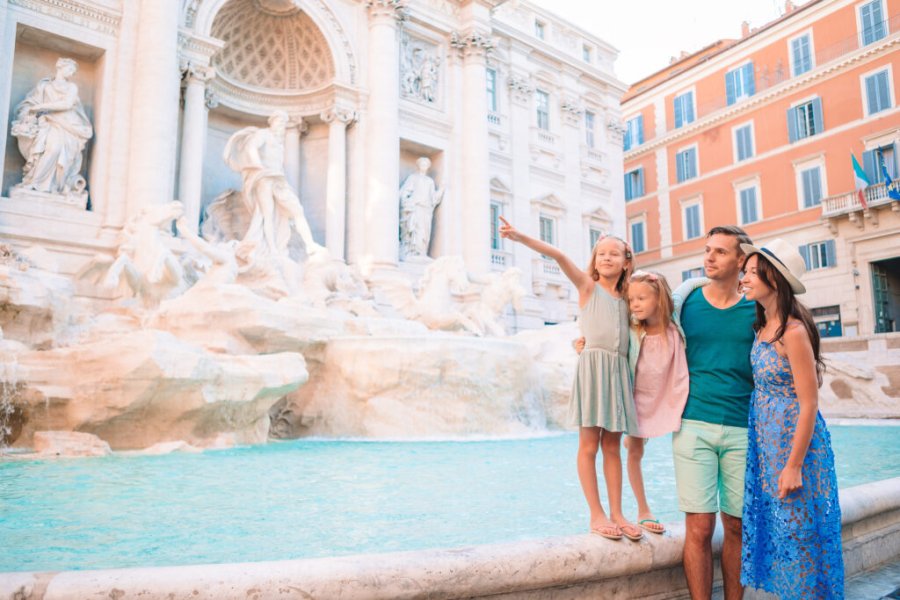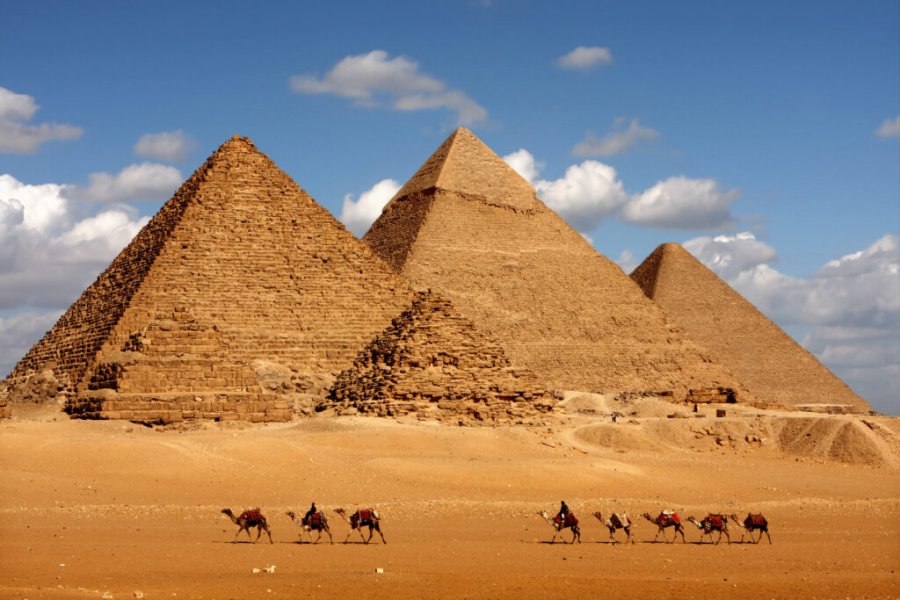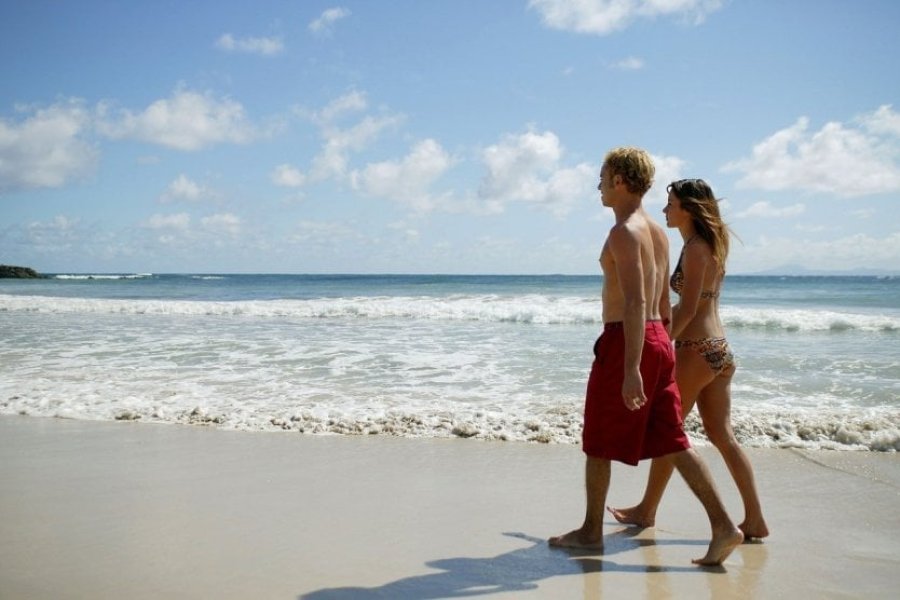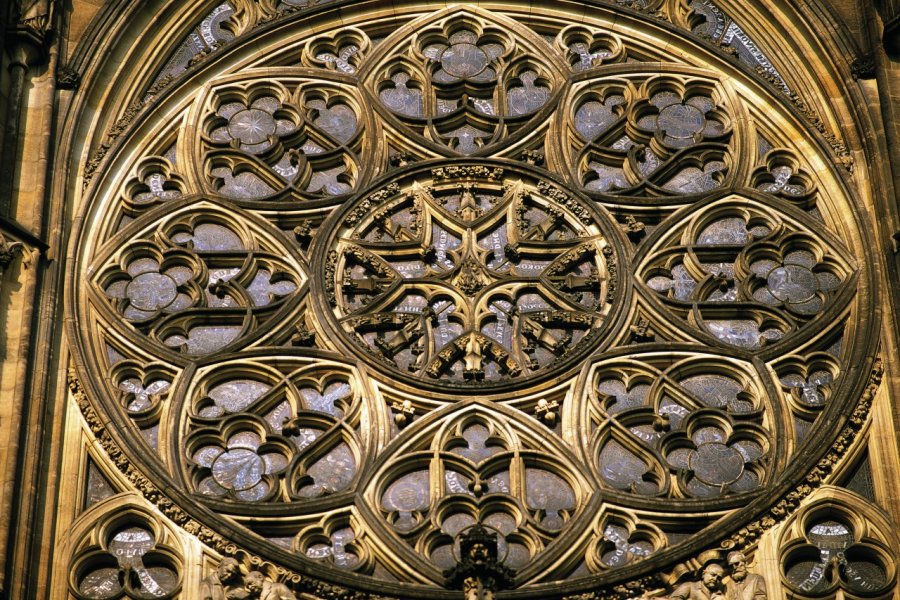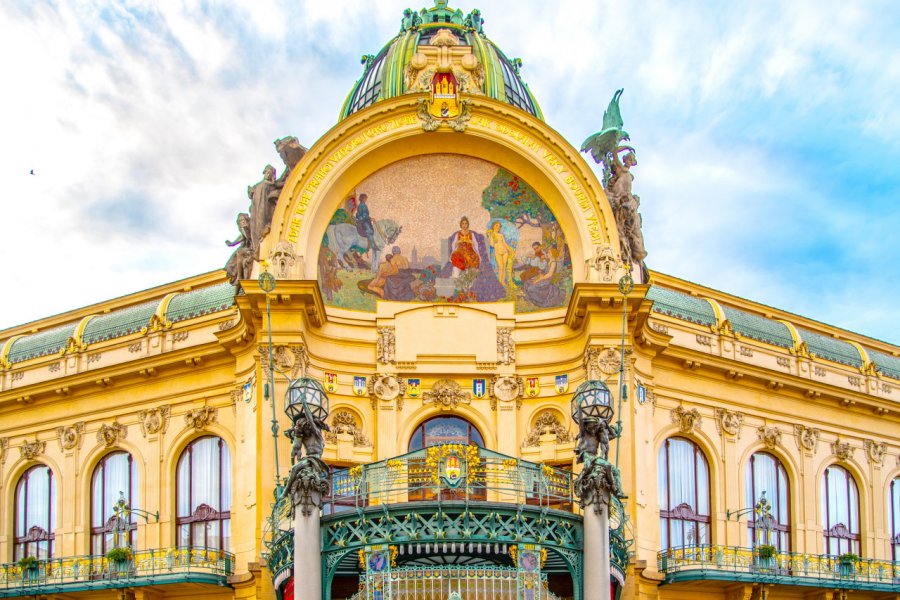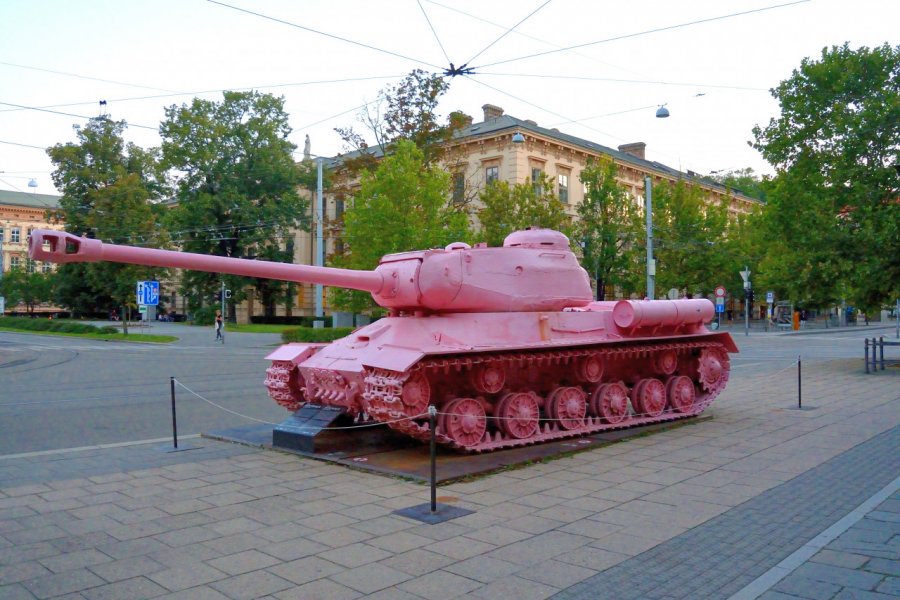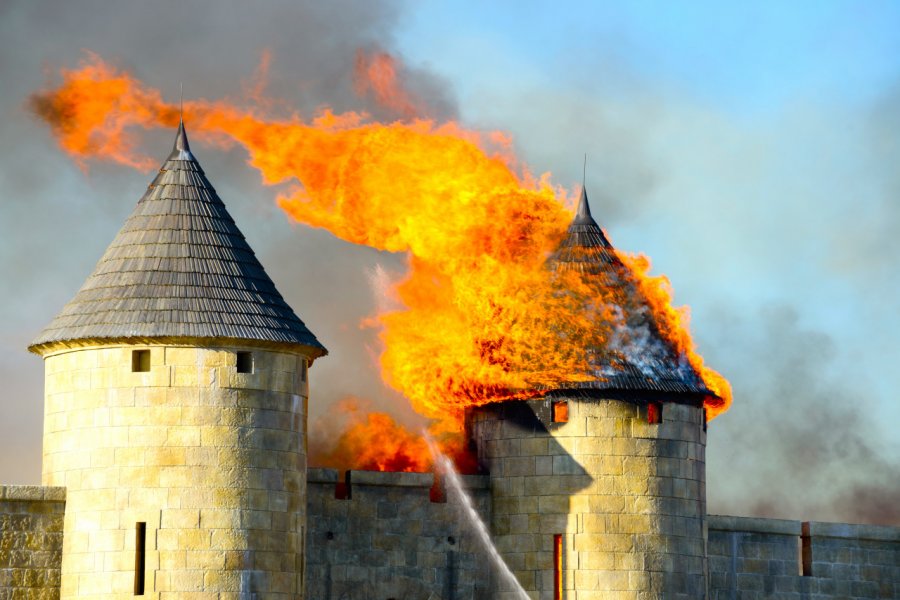Travel guide Prague
Capital of the Czech Republic, Prague is one of the most popular tourist destinations in Eastern Europe. The Charles Bridge and the astronomical clock with its characters who show their noses at the top of the bell tower every hour and real trumpet ringers, the Golden Alley and its miniature houses or the romantic district of Mala Strana, are among Prague's emblematic jewels. The historic centre of the city is a UNESCO World Heritage Site. The mixed architectural influences, Gothic, Baroque, Art Nouveau, make up an exceptional ensemble and one walks from church to church, from the castle to the sumptuous cathedral of Saint Guy, from bridge to bridge along the Voltava river. You should also visit the Jewish quarter and museums, including the fantastic communist one, parks and gardens, including those for children, and discover modern sculptures in public places. In addition, there is a rich cultural life throughout the year with shows on the stage in the old town, prestigious venues and a quality opera programme. Night owls can also go to nightclubs. Finally, it should be noted that in addition to the friendly taverns of traditional Czech cuisine, there are now also great gastronomic restaurants, with Italian influences, equipped with beautiful cellars showcasing local wines, which are really worth a visit.
What to see, what to do Prague?
-
Book an activity
-
Customized travel
- Addresses to visit Prague
When to go Prague ?
Be careful in the middle of summer, crossing the Charles Bridge is an achievement. It is a continuous queue, in one direction and then in the other, and throughout it is a series of tourist catchers that must be avoided. Needless to say, it spoils the fun! Be aware that Prague is a lively city all year round with festivals and events that can be a good excuse for a stay. The Prague Jazz Festival is scheduled for one month in the spring, the Prague Spring Festival begins on the anniversary of the death of composer Bedrich Smetana and offers a rich and prestigious programme of classical music concerts between May 12 and June 3 (www.festival.cz). In June, the Vltava Music Festival (United Island of Prague) is more eclectic and offers concerts on each island in the centre of Prague on different musical themes: jazz or rock every year in early June (www.unitedislands.cz). For All Saints' Day, the cemeteries are abundantly decorated with candles, providing a magical atmosphere for visitors. Christmas offers other festivities. Prague under the snow looks magical and celebrating New Year's Eve in the Czech capital is not lacking in charm. The high tourist season extends from mid-May to the end of September. Prices are then high, especially during long weekends in May. It is therefore preferable to leave in April or October to avoid the crowds, the summer heat in summer and the cold and dry climate of winter. However, from the end of July to 15 August, the city experienced a relative tourist calm during which hotel rates were reduced by 10 to 20%. Hotel rates are at a new peak between Christmas and New Year's Day and it is preferable to book well in advance.
Weather at the moment
Suggested addresses Prague
Travel Prague
-
Find a hotel
-
Car Rental
-
-5% on travel insurance-15% off travel insurance
-
Find a local agency
Find unique Stay Offers with our Partners
How to go Prague
How to go alone
Easily accessible, linked by low-cost flights, Prague is an easy destination that allows you to enjoy a weekend in a capital with a very rich heritage for a reasonable budget. It will be easy to find accommodation in Prague, a city with a wide range of accommodation: cheap hotel, charming hotel in the centre, apartment rental... The city being very touristic everything is done to facilitate your stay. Plan your accommodation in advance in summer and at Christmas.
How to go on a tour
As with all tourist destinations, you will find a multitude of proposals for turnkey stays in the capital of the Czech Republic. Two, three, four, seven, ten days... it's your choice. The most common and most advantageous formula combines flight, accommodation and a guide for the visits.
How to get around
Getting around within cities is very easy in the Czech Republic, where years of communist rule followed by a healthy economy have resulted in dense, efficient, very cheap and easily usable networks for tourists. This is especially true in Prague, which has a modern, clean and fast metro system, as well as a dense network of streetcars that operate 24 hours a day. Cabs are a more expensive, but affordable and sometimes more convenient alternative.
Featured articles Prague
Discover Prague
Enchanting, romantic, musical. The Czech capital is all this at once. It is a city where one's head is bound to spin, where one loses oneself in the baroque, classical, Renaissance or gothic facades of public or religious buildings, where one can enjoy the cheap hospodas where beer flows freely, where one drowns in the smoke of jazz clubs frozen in a bygone era, where one is perverted in cabarets, where one becomes addicted to the sounds of the trendiest clubs and where one wakes up, barely sobered up, in ghostly alleys where the scent of the Cold War still floats. Prague is a destination where, just like in restaurants, the full menu is heavy to digest, but where the menu is as attractive as it is varied! The tourist population is the same: senior citizens with a passion for culture or architecture rub shoulders with young couples or groups of friends on a holiday in a festive atmosphere all year round.
Pictures and images Prague
The 12 keywords Prague
1. #Absurd

A true marker of Czech literary and artistic creation, the sense of the absurd has been born over the centuries through occupation and external domination, against which the only weapon remained the pen and irony. This is particularly true of all the main Czech writings, Soldier Švejk of Hašek, and Kafka or Kundera.
2. #Beer

Pivo is the Czechs' national drink. In fact, they are by far the world's biggest consumers of this popular beverage, consuming almost 150 liters of beer per capita each year, nearly 50 liters more than Austria and Germany. Any occasion is good for a beer!
3. #Secession
This architectural style flourished in Prague at the turn of the 19th and 20th centuries. More comfort and light, use of new shapes and materials such as glass, ceramics and metal, following the example of Art Nouveau in the rest of Europe. Two districts represent this movement: Vinohrady and the Jewish quarter, Josefov.
4. Bohemian Crystal
A Bohemian speciality, crystal is sold everywhere in Prague. Its tradition dates back to the 13th century in the mountains of northern Bohemia. The most emblematic factory located in the city of Jablonec nad Nisou. The best place to buy crystal is Erpet or Moser shops, located in the old town square.
5. #Hockey

Ice hockey is a national religion: its great stars Jaromír Jágr and Dominik Hašek are idolized! Unlike rival nations Canada and Russia. And with good reason: with twelve titles (six as Czechoslovakia), they are third in the rankings of the greatest ice hockey nations of all time.
6. #Hospoda
Equivalent to a bistro or a French tavern, the hospoda is a central place in Czech social life. A clever mix of classes, genres and ages, where everyone meets. As consumption is much cheaper than in France, meetings with friends are almost systematically held in hospodas rather than at home!
7. #Kavarna
Kavarnas are to Prague what literary cafés are to Paris. Often adjacent to cultural venues, they are elegant places where intellectuals, students and philosophers always rub shoulders over a cup of coffee. In Prague, the Slavia (opposite the National Theatre), Arco and Imperial (opposite Masarykovo station) cafés are over a hundred years old.
8. #Krtek

In Prague, you will notice objects, plush toys and other illustrations of a mole that look innocent and adorable. This is Krtek (which means mole in Czech), the hero of a Czech cartoon from the 1950s. The cartoon was also exported to the four corners of the world, bringing unparalleled fame to this small silent animal..
9. #Puppets
An important part of popular culture, puppets have been used since the Renaissance to educate children. Some of them, such as the mythical Hurvínek, are the symbol of the first children's television programmes. Puppets have also often been used by adults, offering political and social caricatures.
10. #Oplatky
This Czech version of the wafer is served hot, sweet (honey) and stuffed with vanilla nuts. The dessert comes from the spa of Karlovy Vary, where it was given to people taking the waters: oplatky are particularly easy to digest. They are served at Christmas dinner. They can be found in supermarkets and souvenir shops.
11. #Škoda
The purpose of many Czechoslovakians' lives was to own a Škoda (pronounced Chkoda). Since then, the former national company has been acquired by the German giant Volkswagen (1991) and is attracting more and more customers in Western Europe with its models. Czech irony again, Škoda means "bad luck" or "damage" in Czech!
12. #Švejk
The symbol of the Czech mentality in all its facets and with all its clichés: quiet, ironic, political, sometimes lazy, bon vivant. A literary creation by Jaroslav Hašek, who describes in his novel Le Brave Soldat Chvéïk (in French) the adventures of a sergeant, drinker and impostor before and during the First World War.
You are from here, if...
You sit down at an already occupied table and ask: Prosím Vás, je tady volno? (pronounced: "procime vasse, yé tady volno?", i.e.: "please, is it free here?"). In the Czech Republic, we share our table like in the good old inns.
You don't order a second beer because yours is almost finished. The waiter will bring you one without you having to worry about it.
You take off your shoes before entering a guest house (also useful if you're staying with a local).
You leave a tip in a restaurant or café, as it makes up most of the waiters' wages!
You use the checkroom rather than the back of your chair (or your armchair at the opera) to put down your jacket.
You onlyorder wine as an aperitif and quickly switch to beer to accompany the meal.
You avoid asking for a carafe of water in the restaurant: in Prague, you have to pay for everything you drink!

